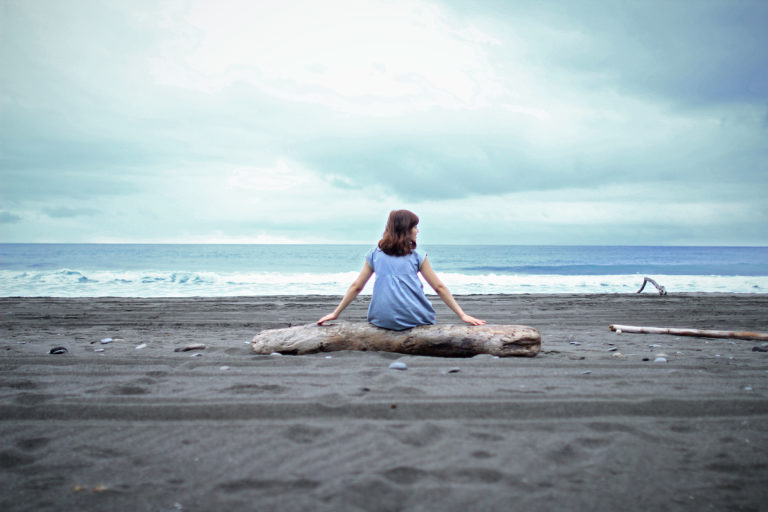To Make Landscape a Place, You Have To Feel It
There is a big difference between “place” and “landscape,” even though the words are often used interchangeably. The original meaning of “landscape” came from 17th-century artistic discourse. It referred to “a picture representing natural inland scenery” (as opposed to a portrait or a sea view, according to the Oxford English Dictionary) and the term has continued to be associated with visual perceptions of land. Regardless of the scope of its perspective, whether small or large, landscape includes awareness of how the land has been shaped by human or natural agencies. It is not “wilderness.” It is not “pristine.” “Place” is more personal and multi-dimensional altogether. It is temporal as well as spatial, because it thickens with personal memories, local stories, history and archaeology. It’s not just a question of how things look, but of how things feel to those who know it well.
Postcodes and map coordinates offer precise locations, but don’t fully distinguish one place from another. The feelings associated with local stories and histories become attached to particular features — triumph or humiliation on the school sports field; tender trysts beneath the cherry trees; the proud hotel that once opened its doors to celebrity guests; the house wounded by the fatal fire. The stories that can cluster around ordinary features usually remain invisible to outsiders, and even events startling enough to hit the national headlines rapidly become yesterday’s news. People passing through see little if any of the life within those streets. For those looking on from a distance, buildings are houses, not homes. They might be architectural gems in stunning surroundings, but they won’t possess the intimate associations that transform landscape into place.
The representation of landscape as a defined view from a particular spot originated in 17th-century Dutch art and flourished in Britain and France in the 18th and 19th centuries. As more people enjoyed more leisure and the means to travel, so they became eager to see more of the country for themselves. William Gilpin’s popular guidebooks, illustrated with his own sketches, helped the new tourists to stop at the optimal spots for seeing landscapes. If they invested in a Claude Glass (a kind of pocket mirror made of polished obsidian in an oval frame), tourists could stand with their backs to the valley and enjoy a lake with hills behind and a hanging bough in the foreground, all perfectly arranged in the glass like a painting by Claude Lorrain. The Claude Glass made for landscape in the extreme — a view of the place so distant that even those physically present saw an idealized reflection. The modern tourist who manipulates holiday shots before sharing them is an heir to the Gilpin legacy.
William Wordsworth thought that landscapes should become places. He grew up in the English Lake District, an area warmly endorsed by Gilpin, but it was personal experience and the stories of those who lived there that mattered most to Wordsworth. Many of his poems recreate the hidden lives of those who left their traces on the land; others convey vivid memories of personal experiences that altered the landscape for ever — turning it into a deeply felt place.
In Preoccupations (1980), Seamus Heaney, a modern poet of place, paid special tribute to Wordsworth as “the first man to articulate the nurture that becomes available to the feelings through dwelling in one dear perpetual place.” But though Wordsworth wrote so passionately about the region he had known since birth, its special meaning dawned on him fully only when he wasn’t there. His first substantial poem was written after he left the Lakes to study at Cambridge, while a very cold winter in Germany prompted his later recollections of his Lakeland boyhood in The Prelude (1850). It was only after a decade of restless travelling that Wordsworth returned to settle in Grasmere with his sister Dorothy, and then poem after poem poured out. Places can require absence, at least to be felt most deeply.
So perspective matters when it comes to place. Recently, cultural geographers have challenged assumptions about the apparent difference between insider and outsider perspectives, because of the less desirable implications of dividing people into those who “belong” and others who “do not belong.” The excluded might come from another region or race, or merely fail to conform to local norms: the homeless, the homosexual and the handicapped have each been grouped by some societies as “out of place.” This has led to new readings of place in terms of stasis and mobility. Instead of regarding “place” as stable and ultimately knowable to those who belong there, it might be understood as a much more mobile space, open to numerous experiences and characterized also by its confluence of passing people.
In Place (2014), the geographer Tim Cresswell has summed up this more dynamic view as “routes” rather than “roots.” And once routes are seen as essential to the sense of place, the experiences and perceptions of visitors — be they travellers, tourists or traders — become as much part of the place as those of its inhabitants, while the places thicken with additional layers of meaning and contrasting perspectives. This mobilized sense of place means that landscapes cease to be so distant: the more detached perspective can in turn contribute to the developing collective meaning. There are many instances of places being transformed by artists — coming across the region with a fresh perspective, they see and then create something that wasn’t there before.
In recent years, David Hockney’s great sequence of Yorkshire landscapes is perhaps the most powerful response to a place. The artist has given us, unquestionably, landscapes, in that they represent real scenes from a particular spot, but they are also passionate celebrations of places, created by someone who has known the area all his life. Hockney’s series combines the wide view of the internationally travelled artist with the profound understanding of a deeply rooted Yorkshireman. They represent landscape and place.
This article was originally published at Aeon and has been republished under Creative Commons.


Share your reflection